In PEI we had gotten into a rut of staying in campgrounds. At the end of a long day, sometimes it is easier than looking for a boondocking (free camping) location. And the provincial parks, while not very picturesque, were pretty inexpensive at $30.00 a night, less our senior citizens’ discount of 10%.
Because PEI is known for their great seafood, we had also been on that quest and eating in restaurants, whether good or bad, costs a lot. Add to that a love of oysters which at $18.00 to $24.00 a dozen could strain any budget.
So in an effort to reign in the expenses, we decided to try to boondock three nights then stay in a campground one or two nights, and so on. That way we could refill our water supply, dump our holding tank, recharge our batteries (Serena’s and ours) and do laundry when needed. On the days that we pay to stay, we will try to get there early so we can get our money’s worth.
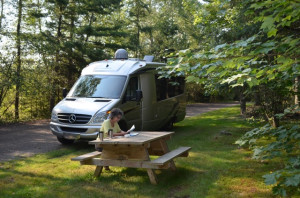
Tatamagouche Picnic Park
On the first night of our new plan we found a fantastic little picnic park in the town of Tatamagouche. We checked thoroughly for “no overnight parking” or “no camping” signs —which usually contain a picture of an RV or a tent. There were none. Picturesque, quiet and safe: the trifecta of boondocking.
Encouraged, we set out to explore Cape Breton, the jewel in Nova Scotia’s crown. We arrived in Port Hawkesbury the next night at dusk. Unable to find a good location, we settled for the local Walmart, always our last resort, but at least it fulfills the cost-free and safe requirements.
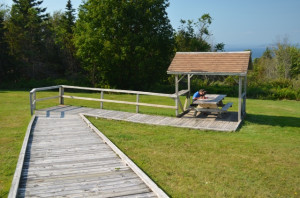
Irish Cove
Continuing our journey, we headed up the coast on route 4 and discovered a lovely rest stop in Irish Cove. Complete with gazebo, picnic benches, vault toilets, and boardwalk, we spent the late afternoon reading and relaxing in our own private park. At bedtime, though, we discovered just how much of an incline we were on. (I forgot to mention, a level spot is always preferable. When you pay for a campsite, you can always take out your leveling blocks. When you are trying to be stealthy, you have to take what you get.) Oh well. Sliding down the bed periodically in the night was a small price to pay for such a beautiful location.
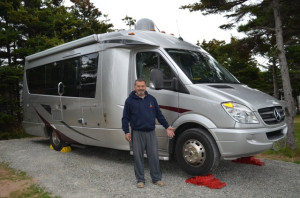
Levels, Manny!
Yesterday, we were heading up the famed Cabot Trail looking for a nice turnout with a view to stop and make lunch. At 2:30, we found a gem: Wreck Cove, a large overlook on the shores of the Atlantic.
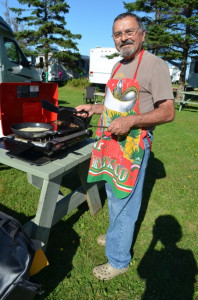
Short Order Chef
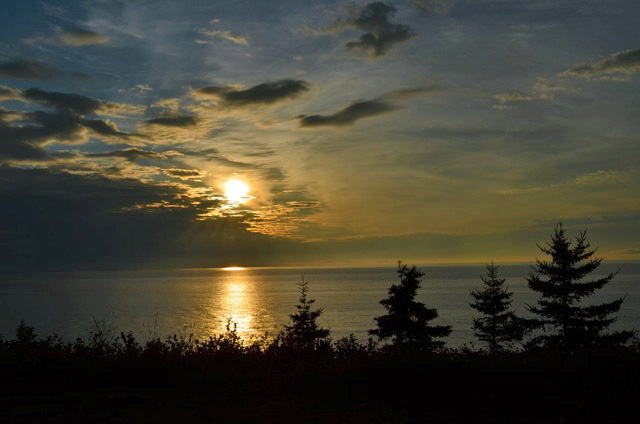
Sunset at Wreck Cove
Manny whipped out the barbecue and made what tasted like the best burgers I have ever eaten. Although early, we decided to stop for the day. We have learned that when you find a great boon docking location, you better take advantage of it. You never know where the next one will be. We sat outside in our chairs until dusk (something you can’t always do when you are trying to be subtle and inconspicuous) and slept with the sound of the gentle surf rocking us to sleep.
Lately, we have enjoyed God’s hospitality and have spent several nights boondocking in church parking lots.
Churches are everywhere —even in the smallest of towns— and usually have large, flat parking lots where we always feel safe.
In Boylston, I watched the local sheriff slow down to check us out and continue on his way —a tacit sign of approval.
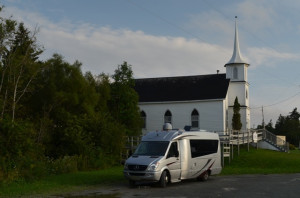
United Church in Boylston
Boondocking is no longer just about saving money. We find we enjoy the challenge of finding a safe and picturesque spot to spend the night and have gotten more daring with each successful find.
A local shared his technique: “Find a great spot to camp, then locate the closest house. Compliment the owner on his beautiful view and ask to spend the night.” According to him, “the resident is so pleased that they not only allow you to stay, but offer everything from free advice to a treat from their kitchen. Some even invite you to stay on their property the next time you come back.” We have yet to try this approach, and will be sure to let you know when we do.


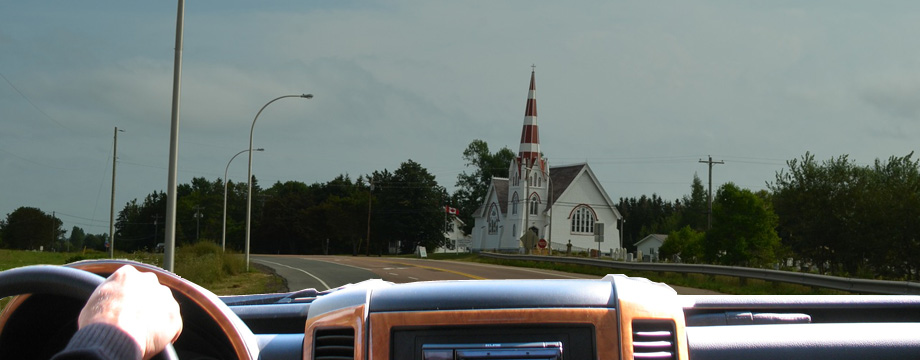
7 Responses to Back to Boondocking